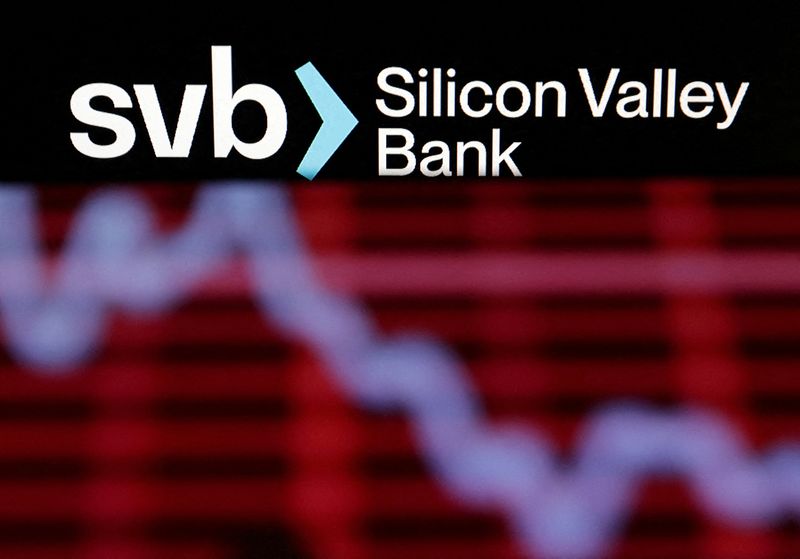
© Reuters. FILE PHOTO: SVB (Silicon Valley Bank) logo and decreasing stock graph are seen in this illustration taken March 19, 2023. REUTERS/Dado Ruvic/Illustration
By Hannah Lang
(Reuters) -The scope of blame for Silicon Valley Bank’s failure stretches across bank executives, Federal Reserve supervisors and other regulators, the banking system’s top cop on Wednesday told U.S. lawmakers demanding answers for the lender’s swift collapse.
“I think that any time you have a bank failure like this, bank management clearly failed, supervisors failed and our regulatory system failed,” Michael Barr, Fed Vice Chair for Supervision, told Congress. “So we’re looking at all of that.”
The failures of SVB, and days later, Signature Bank (OTC:), set off a broader loss of investor confidence in the banking sector that pummeled stocks and stoked fears of a full-blown financial crisis. Depositors tried to pull more than $42 billion in a single day at SVB in early March, surprising regulators and kicking off a deposit flight across other regional banks.
“That’s just an extraordinary scale and speed of a run that I had not ever seen,” Barr said.
“I think all of us were caught incredibly off-guard by the massive bank run that occurred when it did.”
Representatives from both political parties pressed Barr on why the Fed did not act more forcefully, given its supervisors had been raising issues with the bank for months.
Barr on Tuesday criticized SVB for going months without a chief risk officer and for how it modeled interest rate risk.
“Why didn’t the Fed consider escalating any of these issues into a cease-and-desist order or some other forceful action against the bank to remediate these deficiencies?” asked Republican Ann Wagner.
Barr responded that the concern was a “fair point” and that the Fed would look into it.
‘SOME REAL FLAWS’
Barr told the House Financial Services Committee that he first became aware of stress at Silicon Valley Bank on the afternoon of March 9, but that the bank reported to supervisors that morning that deposits were stable.
Martin Gruenberg, head of the Federal Deposit Insurance Corp., told lawmakers he also became aware of SVB’s stress that Thursday evening.
SVB and Signature became the second- and third-largest bank failures in U.S. history. Investors fled to safe havens like bonds while depositors moved funds to bigger institutions and money market funds.
Markets have calmed down since Swiss regulators engineered the sale of troubled Swiss giant Credit Suisse to rival UBS, and after SVB’s assets were sold to First Citizens Bancshares. However, investors remain wary of more troubles lurking in the financial system.
“Our entire economy has been hurt. It has been rattled by what happened this month. Our bank regulatory system has some real flaws,” said Brad Sherman, a Democrat.
The Fed was in discussions with Silicon Valley Bank the day before its collapse to move pledgable collateral to the discount window, a key facility long associated with providing emergency loans to banks, Barr said on Wednesday.
“(Fed) staff were working with Silicon Valley Bank basically all afternoon and evening and through the morning the next day to pledge as much collateral as humanly possible to the discount (window) on Friday,” Barr said.
Some Democrats have also argued a 2018 bank deregulation law is to blame. That law, mostly backed by Republicans but also some moderate Democrats, relaxed the strictest oversight for firms holding between $100 billion and $250 billion in assets, which included SVB and Signature.
The White House is readying plans for legislation that would reinstate those regulations on midsize banks, the Washington Post reported on Wednesday, citing two sources familiar with the matter.





